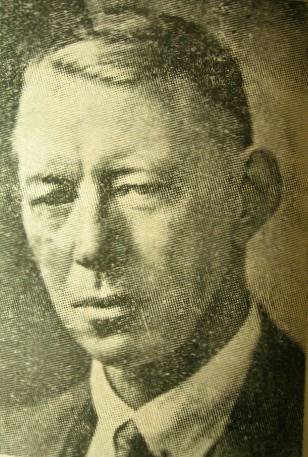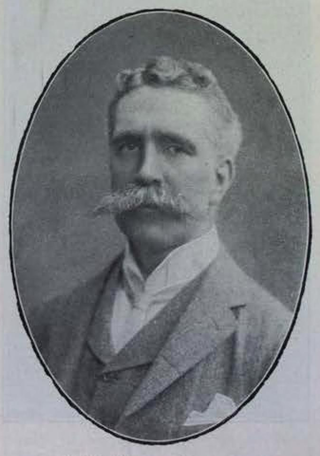Related Research Articles

Harold Maxwell-Lefroy was an English entomologist. He served as a Professor of Entomology at Imperial College London before moving to India where he took over the position of entomologist to the government of India from Lionel de Niceville. He was later made the first Imperial Entomologist to India. He left India after two of his children died from insect-borne diseases. He worked on applied entomology and initiated experiments on the use of chemicals to control insects. A formula he developed was utilized to save Westminster Hall from destruction by wood-boring beetles, while others were used to control lice in the trenches during the First World War. The success of his chemicals led to increased demand and the founding of Rentokil, a company for insecticide production. He was killed in an accident while experimenting with fumigants to control insects.

Thomas Bainbrigge Fletcher was an English entomologist. Although an amateur lepidopterist who worked in the Royal Navy, he became an expert on "microlepidoptera" and was appointed as the second Imperial Entomologist in India to succeed Harold Maxwell Lefroy. Although only an amateur entomologist, he is credited with reorganizing entomological research in India by coordinating and directing research, efficient sharing of findings and a reduction in duplication of research work.
Sir Edward Albert Gait (1863–1950) was an administrator in the Indian Civil Service who rose to serve as Lieutenant-Governor of the Bihar and Orissa Province in the Bengal Presidency of British India. He held that office for the years 1915–1920, with a brief absence during April–July 1918 when Edward Vere Levinge officially acted in the position.
The 1914 Birthday Honours were appointments in the British Empire of King George V to various orders and honours to reward and highlight good works by citizens. The appointments were made to celebrate the official birthday of The King, and were published on 19 June 1914.
The 1931 New Year Honours were appointments by King George V to various orders and honours to reward and highlight good works by citizens of the United Kingdom and British Empire. They were announced on 30 December 1930.
The 1924 New Year Honours were appointments by King George V to various orders and honours to reward and highlight good works by members of the British Empire. They were published in The London Gazette on 1 January 1924.
The New Year Honours 1925 were appointments by King George V to various orders and honours to reward and highlight good works by members of the British Empire. They were published on 30 December 1924.
The New Year Honours 1921 were appointments by King George V to various orders and honours to reward and highlight good works by members of the British Empire. They were published on 31 December 1920.
The King's Birthday Honours 1934 were appointments in many of the Commonwealth realms of King George V to various orders and honours to reward and highlight good works by citizens of those countries. The appointments were made to celebrate the official birthday of The King. They were published on 4 June 1934.
The 1942 New Year Honours were appointments by King George VI to various orders and honours to reward and highlight good works by citizens of the United Kingdom and British Empire. They were announced on 30 December 1941.
The 1928 New Year Honours were appointments by King George V to various orders and honours to reward and highlight good works by citizens of the United Kingdom and British Empire. They were announced on 30 December 1927.
The 1932 New Year Honours were appointments by King George V to various orders and honours to reward and highlight good works by citizens of the United Kingdom and British Empire. They were announced on 29 December 1931.
The 1933 New Year Honours were appointments by King George V to various orders and honours to reward and highlight good works by citizens of the United Kingdom and British Empire. They were announced on 30 December 1932.
The 1936 New Year Honours were appointments by King George V to various orders and honours to reward and highlight good works by citizens of the United Kingdom and British Empire. They were announced on 31 December 1935.
The 1946 New Year Honours were appointments by many of the Commonwealth Realms of King George VI to reward and highlight good works by citizens of those countries, and to celebrate the passing of 1945 and the beginning of 1946. They were announced on 1 January 1946.

John Walter Leather was an agricultural chemist who worked in India as the first Imperial Agricultural Chemist at the Imperial Agricultural Research Institute in Pusa, Bihar. Appointed in 1892, he worked on a variety of agricultural production and chemistry related issues in India.

Francis "Frank" Milburn Howlett was a British entomologist who served in India in the position of a Second Imperial Entomologist, a position which was later changed to the Imperial Pathological Entomologist in India. He specialized in insects and parasitic ticks of medical and veterinary importance. A major discovery by him was the attractant methyl eugenol and its effect on flies of the genus Bactrocera.
Claud Mackenzie Hutchinson CIE was an English bacteriologist who worked in India as Imperial Agricultural Bacteriologist.
Sheila Leather was an engineer, business owner and president of the Women's Engineering Society in 1950–51.
Charles William Mason was an Agricultural entomologist who served in British India. He conducted a pioneering study on the role of birds in Indian agriculture which he published in 1911 along with Harold Maxwell-Lefroy, making him one of the early contributors to the field of economic ornithology.
References
- ↑ Baron Charles George Maurice de Worms (1977). "Obituaries. Sir Eric Ansorge, CIE, CSI". Proceedings and Transactions of the British Entomological and Natural History Society. 10: 29–30.
- ↑ "A wedding at Pusa". The Pioneer. 28 January 1915. p. 11.
- ↑ Butler, E. J. (1941). "Mr. C. M. Hutchinson, C.I.E". Nature. 148 (3752): 367. Bibcode:1941Natur.148..367B. doi: 10.1038/148367a0 . ISSN 1476-4687. S2CID 4143661.